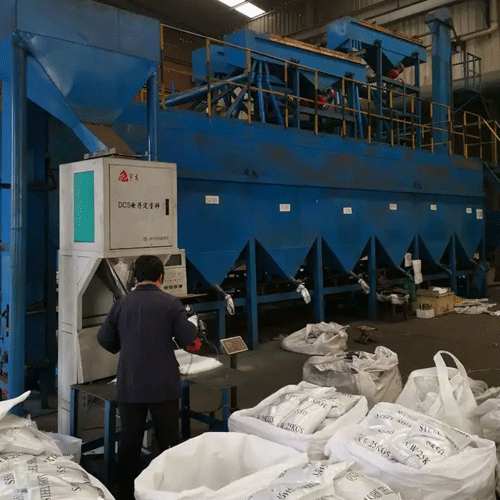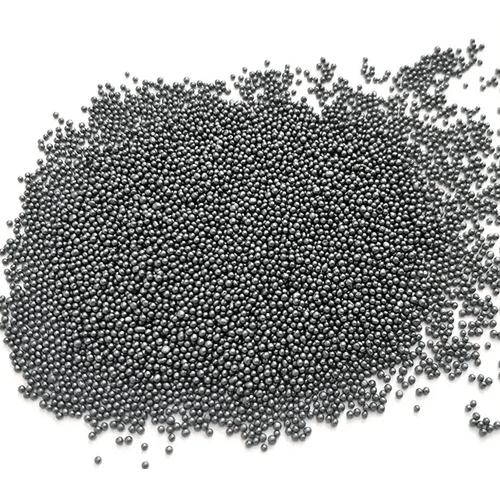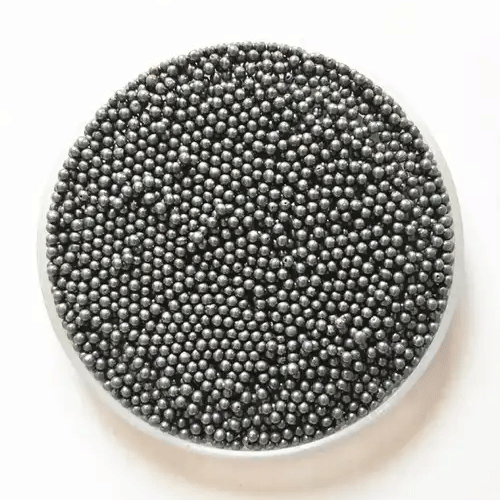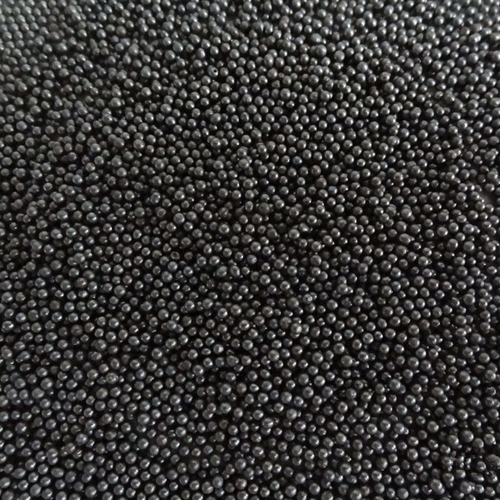Bearing steel grit is an important industrial material, widely used in the manufacture of bearings, auto parts, etc. The following is a brief introduction to the manufacturing process and process of bearing steel grit.
1. Raw material preparation: The main raw materials for bearing steel sand are high-quality molten iron and quartz sand. First, the molten iron needs to be pretreated to remove inclusions and other harmful substances. The quartz sand is then washed and sieved to ensure the purity and uniformity of the sand.
2. Material mixing: Add the treated molten iron and quartz sand into the mixer according to a certain ratio and stir thoroughly to make the two materials evenly distributed and well combined.
3. Mortar preparation: Mix the materials for mortar preparation. The mortar preparation process includes slurry preparation, powder preparation and mixing processes. According to the specific production process and requirements, an appropriate amount of binder and other additives can be added to improve the adhesion and fluidity of the mortar.
4. Forming and solidification: The mortar will be injected into the forming mold and formed into the predetermined shape and size through vibration or compaction. Then, the shaped bearing steel sand is placed in a specific curing equipment and cured by heating or pressurizing it. The purpose of curing is to evaporate and consolidate the water in the mortar to form a solid structure.
5. Sand core baking: If you need to manufacture bearing steel sand with a hollow structure, a sand core baking process is also required. Sand core is a hollow-shaped casting used to form holes and pipes in bearing steel sand. During the sand core baking process, the sand core is placed in a high-temperature baking oven to make it reach a certain hardness and stability.
6. Surface treatment: Cured and baked bearing steel grit requires surface treatment for better appearance and performance. Surface preparation usually includes dusting, cleaning, grinding and coating. These processes can remove impurities and unevenness on the surface and improve the smoothness and precision of the bearing steel grit.
7. Testing and quality control: The manufactured bearing steel grit needs to undergo strict testing and quality control to ensure that it meets relevant standards and requirements. Common testing methods include dimensional testing, material analysis, strength testing, etc. to ensure the quality and reliability of bearing steel grit.
The above is a brief introduction to the manufacturing process and process of bearing steel grit. The specific processes and procedures may vary depending on the manufacturer and product requirements, but generally include raw material preparation, mixing, preparation, molding, curing, baking, surface treatment and quality control.
 Steel shot centrifugal pill forming technology is the preferred choice for producing national standard steel shots
Steel shot centrifugal pill forming technology is the preferred choice for producing national standard steel shots
 Where are steel shot and steel grit mainly used?
Where are steel shot and steel grit mainly used?
 What can steel shot be used for?
What can steel shot be used for?
 Features of Reaguan Steel Shots
Features of Reaguan Steel Shots